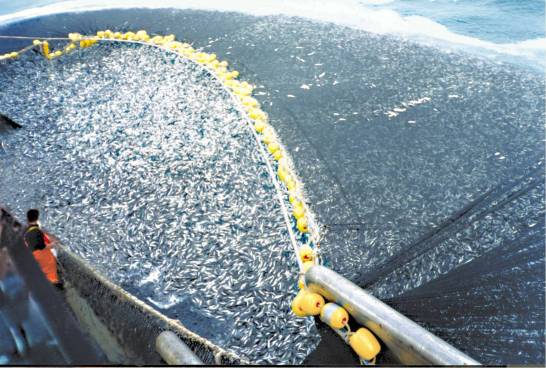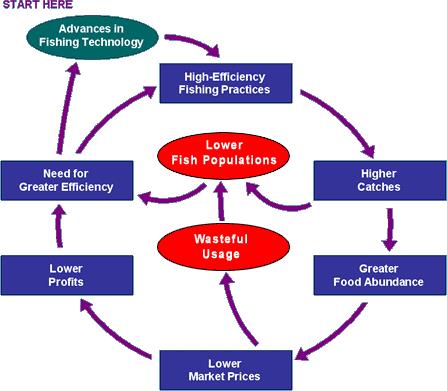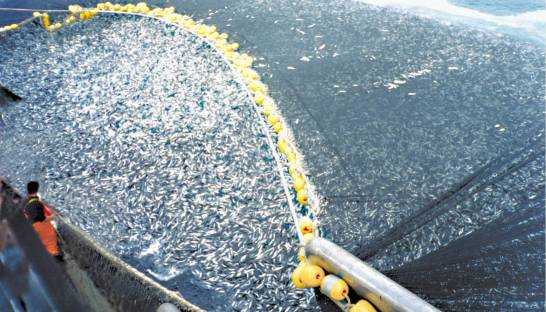Time to open our eyes
Before you sit down and enjoy that expensive halibut dinner or eat your daily tuna fish sandwich, think about, where did this come from? The ocean yes, of course, but is this a sustainable seafood choice that I have made? First off, Atlantic Halibut and Albacore Tuna is just one of several overexploited fish species. In fact, the list of overexploited fish species, is shockingly long, including the Atlantic Salmon, Atlantic Sea Scallop, Bigeye Tuna, Bluefin Tuna, Yellowfin Tuna, Ocean Quahog, Red Snapper, Swordfish, and shrimp, are among just a few suffering from overfishing. Second, sustainability implies that it is the ability to maintain conditions at a certain rate or level, but this is certainly not that case here. It is actually quite the opposite, and it is estimated that the global fishing fleet, is about 2-3 times larger than what the ocean can even support.

How did this become such a problem?
For some species being overexploited, such as the Atlantic Halibut, due to their slow growth rate and late onset of sexual maturity, they are most often caught and harvested before they even got the chance to sexually reproduce. Not only does this make them extremely vulnerable to overfishing, but their populations will take several years to rebuild their numbers, potentially destroying the Atlantic Halibut population in the long run. And they are not the only species feeling similar pressure. Among the species with slow growth rates and late onset sexual maturity are the Bluefin Tuna, Chilean Sea Bass, and the Red Snapper, and again, those are just a few named here.
It also doesn’t help that there is a lack of management, government regulations, and accountability in the industry. Any current laws and regulations, which are already few and far between, don’t have a sustainable limit on fishing capacity, and if there is, enforcement of them is an issue.

To make matters even worse, the fishing industry is based off of economics and marketing. Because there is high demand for certain types of fish, like the Bluefin Tuna, it can be worth close to $30,000, and because Bluefin Tuna numbers are rapidly decreasing, there value is inversely increasing. As pictured above, high demand will force fisherman to catch more and more fish, and yes, at first this will fill the demand, however, through waste and this extreme usage, population numbers are already dropping, and will continue to plummet in the following years. The decrease in number of fish with the demand so high will eventually sky rocket prices. The demand for higher numbers of fish will push for higher efficiency techniques, which will increase the number of catches until fish populations get too low, and so on, and so forth, the cycle will continue, until we have taken everything we can get out greedy little hands on.
What’s the big deal?
Overfishing impacts far beyond the human population and the fish population itself. And while coral reef fish supply a significant food source to billions of people all over the world, it truly causes problems to the marine ecosystem more than anything.

One problem the marine ecosystem is facing is the imbalance in marine life due to targeted fishing of the larger predators, such as tuna and sharks. Side note: sharks are actually killed and harvested for their fins because it is the most valuable part of the shark, but they are also harvested for their meat and liver oil. Who knew? I certainly didn’t. The overfishing of these larger animals causes a trickle-down effect, and ultimately causing an increase in the number of smaller marine animals at the bottom of the food chain, while the top of the food chain slowly gets eliminated. This, in return can increase the growth of algae, and can have detrimental affects of the overall health of the coral reefs.
Another problem we are facing, similar to the last problem, is fishing to many of the big fish, but also fishing too young of fish. Because many of the nurseries are closer to the shore, and therefore even easier for fisherman to catch, they are susceptible to being caught so early on in their lives, that they have yet to reproduce. Thus, another reason populations are having troubles replenishing themselves. In addition, fishing too many of the large fish species that reproduce a significantly higher number of offspring, again, eliminates the possibility of fish species being able to replenish their population, and then we see a decrease in population size.
Indiscriminate, or non-selective fishing techniques such as the use of traps and nets removes more than needed from our oceans. Non-selectively catching fish that eat algae, and essentially keep the marine ecosystem in balance can have detrimental effects to water quality and the overall health of the ocean. Trapping techniques used by fisherman can also cause damage to the coral reef itself. When fisherman set traps up too close to the coral reef, there is a high potential that monofilament fishing lines, and other types of fishing lines can get tangled up in the reefs, and causing severe damage. Unfortunately, coral reefs do not have the luxury of a quick recovery period. Also, ghost fishing, which is simply nets either left or lost in the ocean, can also get caught up in the reefs, or even worse, can get entangled in marine life such as the beloved dolphins, sea turtles, crabs, to name just a few.

What can you do to help?
Wondering how you can make a positive change to aid in the fight against overfishing? Here may be some helpful tips and ideas: educate yourself on the local fishing laws and regulations, choose and buy a more sustainable seafood option by buying only MCS-certified seafood products, only take the fish you need by catching and releasing the fish you don’t eat, and lastly, know where your seafood is coming from!



Yes!!! This is one of the main reasons I cut seafood out of my diet. We are harvesting some fish, such as tuna, before they reach, or just barely reach sexual maturity, which is a huge problem since it’s the bigger, older females that have a higher fecundity. Awesome post!
LikeLike
Great post! I never think about things like this when eating sea food. After taking this class I learned a lot about the impacts we as humans have on marine life whether it is directly or indirectly. I think this post really points that out as well.
LikeLike
Ugh I try telling people that eating fish is bad and they don’t listen ever. I have many friends who won’t eat meat but say they eat fish though and I try to tell them it’s just as bad for the environment what do I do!! I know this post is well written so maybe I’ll send it their way 🙂 We should hyperlink one anothers posts about overfishing ! loved this post!!!
https://audreygraceanimalplace.wordpress.com/2017/04/20/screencast-3-overfishing-part-2-evaluating-the-solutions/
https://audreygraceanimalplace.wordpress.com/2017/04/19/overfishing-part-1-identifying-the-problem/
LikeLiked by 1 person
I think eating fish in my belief is okay, depending on what type it is and where the fish are caught from. There always has to be a balance.
LikeLike